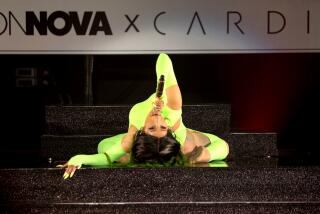When Rodeo gets (almost) real
- Share via
Falling markets and wartime jitters may have reduced the ranks of elite shoppers eager to empty their wallets on Rodeo Drive these days, but for the next two weeks, an annual ritual makes this ritzy strip a must-shop destination no matter what the budget. From Fendi to Bulgari, most of the stores on this couture court are currently engaged in end-of-season sales, slashing their prices by as much as 50%. Yes, stores everywhere do this, but on Rodeo Drive, “half-off” can equal a regular monthly paycheck for most folk. Cutting the price of a fur coat (even a fake one) by $5000 can be pretty breathtaking to see, and maybe puts it within reach. You may still miss rent or a car payment, but if you’ve been eyeing that dress from Gucci or a handbag by Dior, you may as well check it out. Just don’t expect any deals on a pink diamond from Tiffany. The jeweler never has sales -- ever.
Nestled between Wilshire and Santa Monica Boulevards in the heart of Beverly Hills, the three-block strip that is North Rodeo Drive is a veritable who’s who of high-fashion boutiques, beginning with Tiffany on its south end and continuing on through Valentino and Armani to Prada three blocks up.
Ordinarily, stores fall into three categories: expensive handbags, even more expensive clothing and outrageously priced jewelry. But from now through mid-January, you can get a Prada mink coat for 30% to 50% off, or save 40% on a Fendi bag.
In a year when everyone’s pocketbooks have been a little lighter, these kinds of savings are better than ever. And who knows? The budget shopper may bring a dose of reality to the hoity-toity district, just like the good old days.
Rodeo Drive hasn’t always been so glamorous. In 1907, when Rodeo de las Aguas was first built across the lima bean fields, the street was for locals to do their everyday shopping. There was even public transportation; a trolley ran down its center until the tracks were ripped up to accommodate cars.
According to the book, “Inside Rodeo Drive: The Stores, the Stars, the Story,” the street’s associations with wealth and status only started to shift in 1919. That’s when Douglas Fairbanks and Mary Pickford moved to Beverly Hills, triggering an influx of celebrities. By the ‘30s and ‘40s, Rodeo Drive had filled with nightclubs and restaurants so celebs of the day could shine their collective star power in public.
By the ‘60s, it had transformed yet again into a hub for hairdressers and salons. But it wasn’t until 1961, when Fred Hayman set up Giorgio Beverly Hills -- a high-end boutique with elaborate dressing rooms and a Rolls Royce delivery service -- that the street started attracting marquee shops.
It’s nice to know that these same marquee shops that seem to gleam at us from another world -- tantalizing us from the pages of various fashion magazines only to shock us with their price tags -- are sometimes part of the real Los Angeles. Even if only for two weeks.






